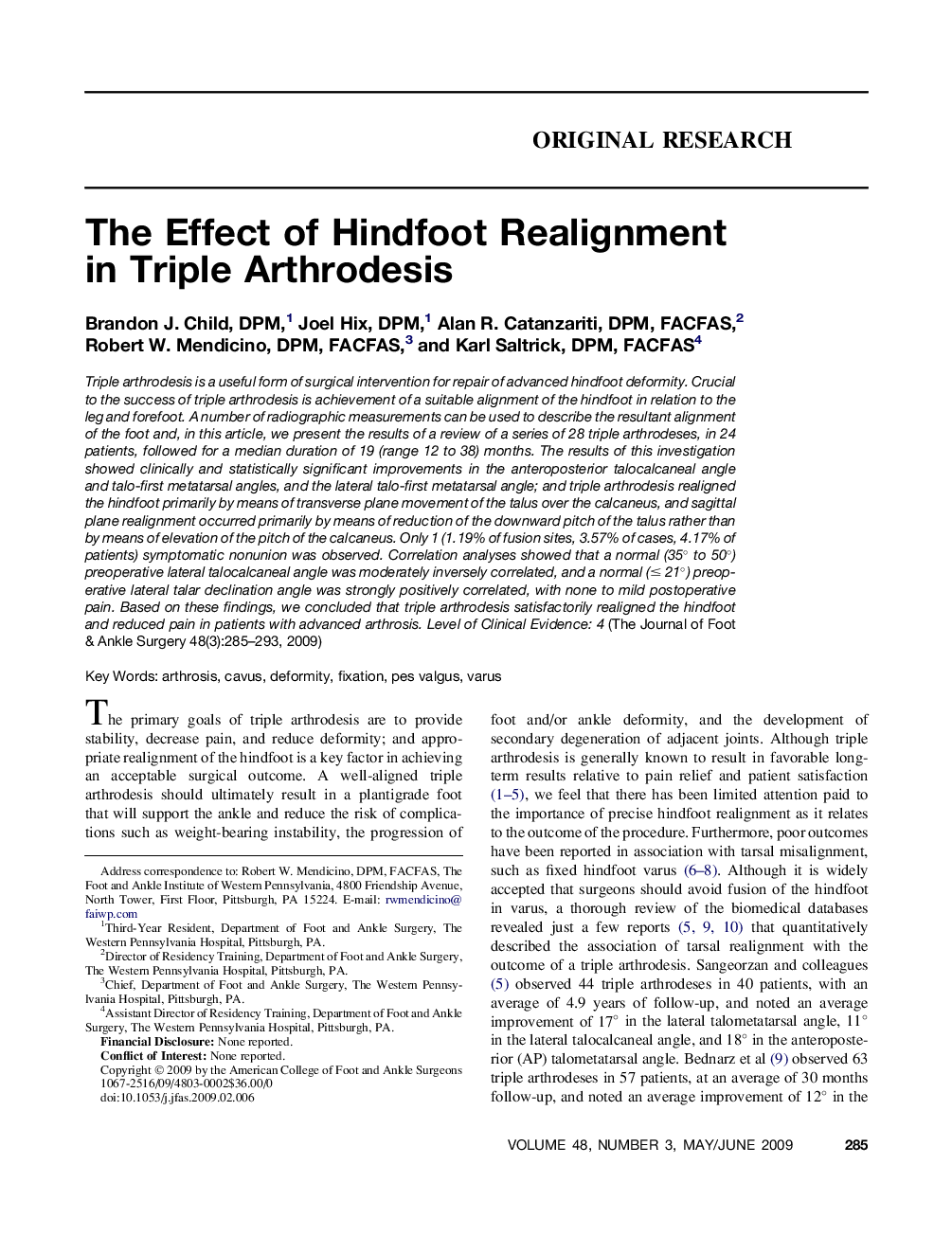| Article ID | Journal | Published Year | Pages | File Type |
|---|---|---|---|---|
| 2715975 | The Journal of Foot and Ankle Surgery | 2009 | 9 Pages |
Triple arthrodesis is a useful form of surgical intervention for repair of advanced hindfoot deformity. Crucial to the success of triple arthrodesis is achievement of a suitable alignment of the hindfoot in relation to the leg and forefoot. A number of radiographic measurements can be used to describe the resultant alignment of the foot and, in this article, we present the results of a review of a series of 28 triple arthrodeses, in 24 patients, followed for a median duration of 19 (range 12 to 38) months. The results of this investigation showed clinically and statistically significant improvements in the anteroposterior talocalcaneal angle and talo-first metatarsal angles, and the lateral talo-first metatarsal angle; and triple arthrodesis realigned the hindfoot primarily by means of transverse plane movement of the talus over the calcaneus, and sagittal plane realignment occurred primarily by means of reduction of the downward pitch of the talus rather than by means of elevation of the pitch of the calcaneus. Only 1 (1.19% of fusion sites, 3.57% of cases, 4.17% of patients) symptomatic nonunion was observed. Correlation analyses showed that a normal (35° to 50°) preoperative lateral talocalcaneal angle was moderately inversely correlated, and a normal (≤ 21°) preoperative lateral talar declination angle was strongly positively correlated, with none to mild postoperative pain. Based on these findings, we concluded that triple arthrodesis satisfactorily realigned the hindfoot and reduced pain in patients with advanced arthrosis. Level of Clinical Evidence: 4
